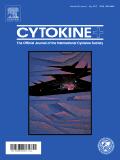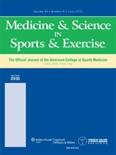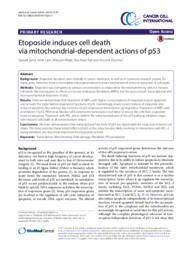Duronio, Vincent
Person Preferred Name
Vincent Duronio
Related Works
Content type
Digital Document
Abstract
Inflammatory bowel disease (IBD) is an idiopathic disease characterized by chronic intestinal
inflammation and ulceration. Canada has the highest incidence of IBD in the world with 1 in
150 people affected. While treatment options target symptoms and attempt to dampen down
inflammation, an increasing population of patients is refractory to current therapeutic
options. Macrophages are heterogeneous in their functions and while it is clear that
inflammatory macrophages contribute to inflammation in IBD, multiple lines of evidence
suggest that alternatively activated macrophages may offer protection during intestinal
inflammation. In vivo SHIP deficient mouse macrophages are alternatively activated so
SHIP deficient mice provide a unique genetic model of alternative macrophage activation.
Using the dextran sodium sulfate (DSS)-induced model of colitis, I found that SHIP-/- mice
are protected during induced intestinal inflammation, the protection is macrophage mediated,
and can be conferred to a susceptible host. To determine how SHIP contributes to alternative
activation of macrophages, I demonstrate that SHIP-deficient murine macrophages are more
sensitive to IL-4-mediated skewing to an alternatively activated phenotype. Moreover, SHIP
levels are reduced in alternatively activated macrophages and this is required for alternative
activation because it is dependent on PI3K activity. Arginase (ArgI) induction is specifically
dependent on the PI3Kp110δ isoform of class IA PI3K. As such, mice deficient in
PI3Kp110δ catalytic subunit activity have increased clinical disease activity and histological
damage during DSS-induced colitis. Colitis severity correlates with reduced numbers of
ArgI+ M2 macrophages in the colon, increased nitric oxide production, and is macrophagedependent. Importantly, adoptive transfer of IL-4-treated macrophages from wild type mice,
but not from PI3Kp110δ deficient mice, protects mice during DSS-induced colitis. Protection is lost when mice are treated with inhibitors that block arginase activity showing that ArgI
activity is required for M2 macrophage-mediated protection from intestinal inflammation.
These findings identify SHIP and the PI3K pathway as critical regulators of alternative
macrophage activation and as potential targets for manipulation in IBD. In addition,
adoptive transfer of alternatively activated macrophages to patients with IBD also offers a
promising, new strategy for treatment that may be particularly useful in patients who are
refractory to conventional therapies.
Origin Information
Content type
Digital Document
Abstract
We have investigated phosphatidylinositol 3-kinase (PI3K)-dependent survival signalling pathways using several cytokines in three different hemopoietic cell lines, MC/9, FDC-P1, and TF-1. Cytokines caused PI3K- and PKB-dependent phosphorylation of FOXO3a (previously known as FKHRL1) at three distinct sites. Following cytokine withdrawal or PI3K inhibition, both of which are known to lead to apoptosis, there was a loss of FOXO3a phosphorylation, and a resulting increase in forkhead transcriptional activity, along with increased expression of Fas Ligand (FasL), which could be detected at the cell surface. Concurrently, an increase in cell surface expression of Fas was also detected. Despite the presence of both FasL and Fas, there was no detectable evidence that activation of Fas-mediated apoptotic events was contributing to apoptosis resulting from cytokine starvation or inhibition of PI3K activity. Thus, inhibition of FOXO3a activity is mediated by the PI3K–PKB pathway, but regulation of FasL is not the primary means by which cell survival is regulated in cytokine-dependent hemopoietic cells. We were also able to confirm increased expression of known FOXO3a targets, Bim and p27kip1. Together, these results support the conclusion that mitochondrial-mediated signals play the major role in apoptosis of hemopoietic cells due to loss of cytokine signalling. [ABSTRACT FROM AUTHOR]
Origin Information
Content type
Digital Document
Abstract
Growth factor withdrawal from hemopoietic cells results in activation of the mitochondrial pathway of apoptosis. Members of the Bcl-2 family regulate this pathway, with anti-apoptotic members counteracting the effects of pro-apoptotic members. We investigated the effect on Mcl-1 function of mutation at a conserved threonine 163 residue (T163) in its proline, glutamate, serine, and threonine rich (PEST) region. Under normal growth conditions, Mcl-1 half-life increased with alteration of T163 to glutamic acid, but decreased with mutation to alanine. However, both T163 mutants exhibited greater pro-survival effects compared with the wild type, which can be explained by an increased stability of the T163A mutant in cytokine-starved conditions. Both the mutant forms exhibited prolonged binding to pro-apoptotic Bim in cytokine-deprived cells. The extent to which Mcl-1 mutants were able to exert their anti-apoptotic effects correlated with their ability to associate with Bim. We further observed that primary bone marrow derived macrophages survived following cytokine withdrawal as long as Bim and Mcl-1 remained associated. In our study, we were unable to detect a role for GSK-3-mediated regulation of Mcl-1 expression. Based on these results we propose that upon cytokine withdrawal, survival of hemopoietic cells depends on association between Mcl-1 and Bim. Furthermore, alteration of T163 of Mcl-1 may change the protein such that its association with Bim is affected, resulting in prolonged association and increased survival. Le retrait de facteurs de croissance du milieu de croissance des cellules hémopoïétiques résulte en l'activation de la voie mitochondriale de l'apoptose. Les membres de la famille Bcl-2 régulent cette voie, les membres anti-apoptotiques contrecarrant les effets des membres pro-apoptotiques. Nous avons examiné l'effet de la mutation d'un résidu thréonine conservé (T163), présent dans la région riche en résidus proline, glutamate, sérine et thréonine (PEST), sur la fonction de Mcl-1. Le remplacement de la T163 par un acide glutamique augmentait la demi-vie de Mcl-1 en conditions de croissance normale, alors que la mutation en alanine la diminuait. Cependant, les deux types de mutations de la T163 favorisaient la survie comparativement au type sauvage, ce qui pouvait s'expliquer par une stabilité accrue des protéines mutantes en conditions de privation en cytokines. Les deux formes mutantes se liaient plus longtemps à Bim, un effecteur pro-apoptotique, chez les cellules privées de cytokines. La mesure avec laquelle les protéines Mcl-1 mutantes étaient capables d'exercer leurs effets anti-apoptotiques étaient corrélés avec leur capacité de s'associer à Bim. Nous avons ensuite observé que les macrophages primaires dérivés de la moelle osseuse survivaient après le retrait des cytokines tant et aussi longtemps que Bim et Mcl-1 restaient associés. Dans notre étude, nous avons été incapables de détecter un rôle de la régulation de l'expression de Mcl-1 par GSK-3. Nous proposons à partir de ces résultats qu'à la suite du retrait des cytokines, la survie des cellules hémopoïtiques dépend de l'association de Mcl-1 à Bim. De plus, la modification de la T163 de Mcl-1 pouvait changer la protéine de telle sorte que son association à Bim était affectée, résultant en une association prolongée et en une survie accrue. [ABSTRACT FROM AUTHOR]
Origin Information
Content type
Digital Document
Abstract
p53 is a tumor suppressor protein which is either lost or inactivated in a large majority of tumors. The small molecule 2-phenylethynesulfonamide (PES) was originally identified as the inhibitor of p53 effects on the mitochondrial death pathway. In this report we demonstrate that p53 protein from PES-treated cells was detected in reduced mobility bands between molecular weights 95–220 kDa. Resolution of p53 aggregates on urea gel was unable to reduce the high molecular weight p53 aggregates, which were shown to be primarily located in the nucleus. Therefore, our data suggest that PES exerts its effects through covalent cross-linking and nuclear retention of p53. [ABSTRACT FROM AUTHOR]
Origin Information
Content type
Digital Document
Abstract
Purpose: Angiopoietin-like 4 (ANGPTL4) is known to play a variety of roles in the response to exercise, and more recently has been shown to enhance the healing of tendon, a fibrous load-bearing tissue required for efficient movement. The objective of the current study was to further explore the mechanisms of ANGPTL4's effect on tendon cells using a gene array approach.
<p>Methods: Human tendon fibroblasts were treated with recANGPTL4 and their global transcriptome response analyzed after 4 and 24 h. We also conducted functional studies using tendon fibroblasts derived from human subjects, cultured in the presence or absence of applied cyclic stretch and/or siRNA for ANGPTL4, and as confirmation we also used tendon cells from wild type (ANGPTL4 +/+) or knockout (ANGPTL4-/-) mice.
<p>Results: The leading functions of ANGPTL4 predicted by the resulting pathway analysis were cell movement and proliferation. The experiments demonstrated that ANGPTL4 significantly enhanced tendon cell proliferation and the cell cycle progression, as well as adhesion and migration.
<p>Conclusion: Taken together, these findings provide novel molecular insights into the effect of ANGPTL4, a multifunctional protein that regulates the physiological response to exercise, on fundamental tendon cell functions.
Origin Information
Content type
Digital Document
Abstract
Mcl-1 (myeloid cell leukaemia-1) is a Bcl-2 family member with short-term pro-survival functions but whose other functions, demonstrated by embryonic lethality of knockout mice, do not involve apoptosis. In the present study, we show a cell-cycle-regulatory role of Mcl-1 involving a shortened form of the Mcl-1 polypeptide, primarily localized to the nucleus, which we call snMcl-1. snMcl-1 interacts with the cell-cycle-regulatory protein Cdk1 (cyclin-dependent kinase 1; also known as cdc2) in the nucleus, and Cdk1 bound to snMcl-1 was found to have a lower kinase activity. The interaction with Cdk1 occurs in the absence of its cyclin partners and is enhanced on treatment of cells with G2/M blocking agents, but not by G1/S blocking. The snMcl-1 polypeptide is present during S and G2 phases and is negligible in G1. Overexpression of human Mcl-1 in a murine myeloid progenitor cell line resulted in a lower rate of proliferation. Furthermore, Mcl-1-overexpressing cells had lower total Cdk1 kinase activity compared with parental cells, in both anti-Cdk1 and anti-cyclin B1 immunoprecipitates. The latter results suggest that binding to snMcl-1 alters the ability of Cdk1 to bind its conventional partner, cyclin B1. Given the important role of Cdk1 in progression through G2 and M phases, it is probable that the inhibition of Cdk1 activity accounts for the inhibitory effect of Mcl-1 on cell growth.
Origin Information
Content type
Digital Document
Abstract
Here we report a novel role for myeloid cell leukemia 1 (Mcl-1), a Bcl-2 family member, in regulating phosphorylation and activation of DNA damage checkpoint kinase, Chk1. Increased expression of nuclear Mcl-1 and/or a previously reported short nuclear form of Mcl-1, snMcl-1, was observed in response to treatment with low concentrations of etoposide or low doses of UV irradiation. We showed that after etoposide treatment, Mcl-1 could coimmunoprecipitate with the regulatory kinase, Chk1. Chk1 is a known regulator of DNA damage response, and its phosphorylation is associated with activation of the kinase. Transient transfection with Mcl-1 resulted in an increase in the expression of phospho-Ser345 Chk1, in the absence of any evidence of DNA damage, and accumulation of cells in G2. Importantly, knockdown of Mcl-1 expression abolished Chk1 phosphorylation in response to DNA damage. Mcl-1 could induce Chk1 phosphorylation in ATM-negative (ataxia telangectasia mutated) cells, but this response was lost in ATR (AT mutated and Rad3 related)-defective cells. Low levels of UV treatment also caused transient increases in Mcl-1 levels and an ATR-dependent phosphorylation of Chk1. Together, our results strongly support an essential regulatory role for Mcl-1, perhaps acting as an adaptor protein, in controlling the ATR-mediated regulation of Chk1 phosphorylation.
Origin Information
Content type
Digital Document
Abstract
MCL-1, a pro-survival member of the BCL-2 family, was previously shown to have functions in ATR-dependent Chk1 phosphorylation following DNA damage. To further delineate these functions, we explored possible differences in DNA damage response caused by lack of MCL-1 in mouse embryo fibroblasts (MEFs). As expected, Mcl-1(-/-) MEFs had delayed Chk1 phosphorylation following etoposide treatment, compared to wild type MEFs. However, their response to hydroxyurea, which causes a G(1)/S checkpoint response, was not significantly different. In addition, appearance of gamma-H2AX was delayed in the Mcl-1(-/-) MEFs treated with etoposide. We next investigated whether MCL-1 is present, together with other DNA damage response proteins, at the sites of DNA damage. Immunoprecipitation of etoposide-treated extracts with anti-MCL-1 antibody showed association of MCL-1 with gamma-H2AX as well as NBS1. Immunofluorescent staining for MCL-1 further showed increased co-staining of MCL-1 and NBS1 following DNA damage. By using a system that creates DNA double strand breaks at specific sites in the genome, we demonstrated that MCL-1 is recruited directly adjacent to the sites of damage. Finally, in a direct demonstration of the importance of MCL-1 in allowing proper repair of DNA damage, we found that treatment for two brief exposures to etoposide , followed by periods of recovery, which mimics the clinical situation of etoposide use, resulted in greater accumulation of chromosomal abnormalities in the MEFs that lacked MCL-1. Together, these data indicate an important role for MCL-1 in coordinating DNA damage mediated checkpoint response, and have broad implications for the importance of MCL-1 in maintenance of genome integrity.
Origin Information
Content type
Digital Document
Abstract
Background
Etoposide has been used clinically in cancer treatment, as well as in numerous research studies, for many years. However, there is incomplete information about its exact mechanism of action in induction of cell death.
<p>Methods
Etoposide was compared at various concentrations to characterize the mechanisms by which it induces cell death. We investigated its effects on mouse embryonic fibroblasts (MEFs) and focused on both transcriptional and non-transcriptional responses of p53.
<p>Results
Here we demonstrate that treatment of MEFs with higher concentrations of etoposide induce apoptosis and activate the transcription-dependent functions of p53. Interestingly, lower concentrations of etoposide also induced apoptosis, but without any evidence of p53-dependent transcription up-regulation. Treatment of MEFs with an inhibitor of p53, Pifithrin-α, blocked p53-dependent transcription but failed to rescue the cells from etoposide-induced apoptosis. Treatment with PES, which inhibits the mitochondrial arm of the p53 pathway inhibited etoposide-induced cell death at all concentrations tested.
<p>Conclusions
We have demonstrated that transcriptional functions of p53 are dispensable for etoposide-induced cell death. The more recently characterized effects of p53 at the mitochondria, likely involving its interactions with BCL-2 family members, are thus more important for etoposide’s actions.
Origin Information






